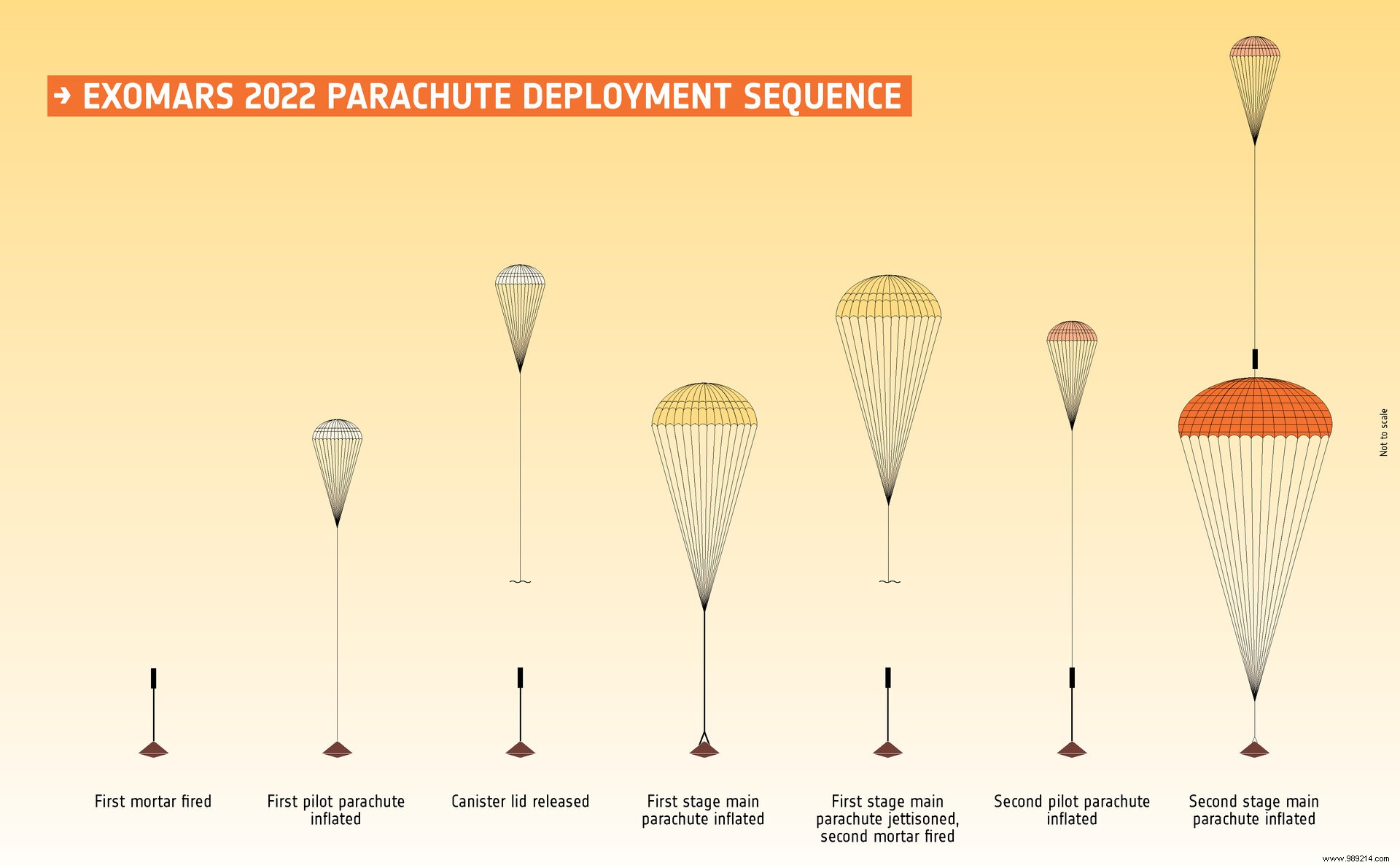The European Space Agency and the Russian agency Roscosmos are still working on the development of their joint mission ExoMars 2022, the objective of which will be to search for traces of past life on the red planet. The parachute problems, which caused the mission to be postponed last year, have not yet been fully resolved, but there is some improvement.
Let's start with a quick reminder of the context. Just like NASA, the European Space Agency (ESA) and the Russian agency Roscosmos were to take advantage of the launch window opened last summer to send a joint mission to the red planet, called ExoMars 2020. Its main objective was the same as that of the American robot Perseverance, namely to look for traces of past life. Finally, the launch of the ExoMars mission was postponed to summer 2022 for technical reasons.
You probably already know that landing on Mars isn't easy. On site, the atmosphere is indeed very thin and not very dense, which limits the deceleration capacity of the vessels during the descent. You must therefore succeed in slowing down a probe launched at more than 20,000 km/h in about six minutes to hope to attempt a soft landing.
To do this, NASA and more recently China have relied on the deployment of gigantic parachutes. This is why the European agency (ESA) and the Russian agency Roscomos have decided to operate in the same way as part of their joint mission. Specifically, the module will need two parachutes:one fifteen meters and one thirty-five meters, each with its own extraction chute.
Unfortunately, the canopy deployment tests suffered several failures at high altitude last year, and given the costs involved in the mission, the two agencies could not afford to risk a crash on the surface of Mars. This explains the postponement of the mission while working on these parachute problems.
So where are we? On June 24, new tests were carried out at the Esrange space center in Kiruna, Sweden. During these tests, a helium-filled balloon lifted the ExoMars landing capsule to an altitude of twenty-nine kilometers. This model was then jettisoned, releasing its smaller supersonic parachute first, followed by the larger canopy.
While the first parachute released without a hitch, the larger subsonic parachute was somewhat damaged during the test, although it slowed down the capsule enough.
In concrete terms, each of the two braking parachutes is equipped with a small pilot parachute responsible for deploying them correctly. During this test, the larger canopy's pilot parachute did not perform as expected, ultimately subjecting it to too much pressure. As a result, the larger parachute tore slightly.
Despite everything, you might as well drink the glass half full:there is still something better. "The performance of the second main parachute was not perfect, but much improved [compared to previous tests]thanks to bag and canopy adjustments “, said Thierry Blancquaert, ExoMars program team leader.

Engineers are currently investigating the issue to try to find a solution before the next round of drop tests scheduled for next October and November. Just as was the case last year, ESA will also approach NASA's JPL teams with the aim of fine-tuning its parachute system.
If all goes as planned, this mission could therefore be launched in the summer of 2022 before landing in early 2023 .
The general idea will be to install a fixed scientific platform built by the Russians. Several instruments will probe the Martian environment . Meanwhile, a rover called Rosita Franklin, built this time by the ESA, will be in charge of traversing the surface and drilling up to two meters in order to collect samples of material . These will then be brought back to the platform which will analyze them.